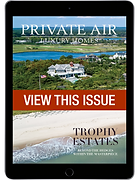ARTS & COLLECTIBLES
WRITTEN ROOMS
Parastou Forouhar’s ‘Written Rooms’ represent a fusion of art, identity, and politics.
CHELSEA HARDIN

In the realm of contemporary art, a distinctive voice emerges, one that not only resonates with creative expression but also carries profound socio-political narratives. This voice belongs to Parastou Forouhar, an Iranian artist who sought refuge in Germany before the tragic loss of her parents at the hands of Iranian state authorities. Through her installations, she skillfully weaves together the threads of religious and political violence with the evolving identity of Iranian women.
Forouhar’s artistic arsenal is nothing short of remarkable, as she employs Persian calligraphy in ways that defy convention and challenge Western preconceptions of this ancient script. In her hands, gallery spaces are transformed into what she aptly terms “written rooms,” where the very essence of Persian script comes to life in a mesmerizing dance of ink and paper.
What sets Forouhar’s work apart is not just its visual brilliance but also its profound connection to the rich heritage of Persian calligraphy. Her meticulous execution and recurrent patterns pay homage to age-old styles crafted by past masters. Among these styles, the Shekasteh (broken) script, the Nasta’liq (suspended), and the Siyh mashgh, a unique calligraphic practice characterized by overlapping diagonal words and letters, take center stage in her exhibitions.
Intriguingly, Forouhar’s work bears the subtle imprint of Western traditions, most notably the Gesamtkunstwerk, a concept aimed at creating art that envelops and transcends its immediate surroundings. Here, Persian calligraphy evolves from its traditional confines, embracing the very architectural spaces it inhabits. Instead of being relegated to mere pages, ceramics, or fabrics, Forouhar’s script becomes an integral part of the very walls that house it.
Yet, for non-Iranian viewers, the Persian letters may appear illegible, perhaps dismissed as ornamental strokes. Herein lies the beauty and complexity of Forouhar’s art. Much like the architectural interiors of ancient Iranian palaces and mosques, where walls are adorned with intricate epigraphy, geometric patterns, floral designs, and vibrant tiles, her work invites viewers into an immersive experience. It transcends the visual realm, engaging tactile sensations, much akin to the sensory wonder found within those historic structures.
What further distinguishes Forouhar’s art is its dynamic nature. Her “written rooms” come to life in the presence of live audiences, as she enacts her craft with the grace of a performer. This captivating fusion of dynamic bodily performances with age-old writing customs is a testament to the artist’s ability to breathe life into her creations. It is within this vibrant interplay that Forouhar’s art truly shines.
In the context of Iran’s contemporary art scene, such fleeting performances hold a special place. They resonate deeply with an engaged Iranian audience, where art transcends the boundaries of mere aesthetics. In Iran, art is a potent medium for political expression, a force that, through unwavering dedication, possesses the potential to catalyze societal transformation. Forouhar, a vocal critic of the atrocities committed by the Islamic Republic, frequently returns to her homeland, where her art finds resonance and relevance.
It is only fitting that the artist’s impactful words will be showcased in collaboration with the nonprofit Farhang Foundation in the upcoming exhibition, “ART IRAN: Falling into Language.” This compelling showcase, set to run at the Craft Contemporary art museum on January 28, 2024 though May 5th, 2024, promises to be a testament to the enduring power of art as a vehicle for cultural expression and social change.
In “ART IRAN: Falling into Language,” nine expatriate Iranian artists, including Parastou Forouhar, will take center stage, exploring diverse forms of the Persian alphabet, handwriting, and fragments as integral elements of their artistic practice. As the exhibition unfolds, it beckons us to delve deeper into the intricate tapestry of Persian calligraphy, a world where art becomes a vessel for memory, identity, and the unspoken stories of a nation.
www.craftcontemporary.org
www.farhang.org

Join our mailing list to receive curated updates, special features, and invitations to events that define the world of the discerning few.
Sign up today and never miss what’s next.






